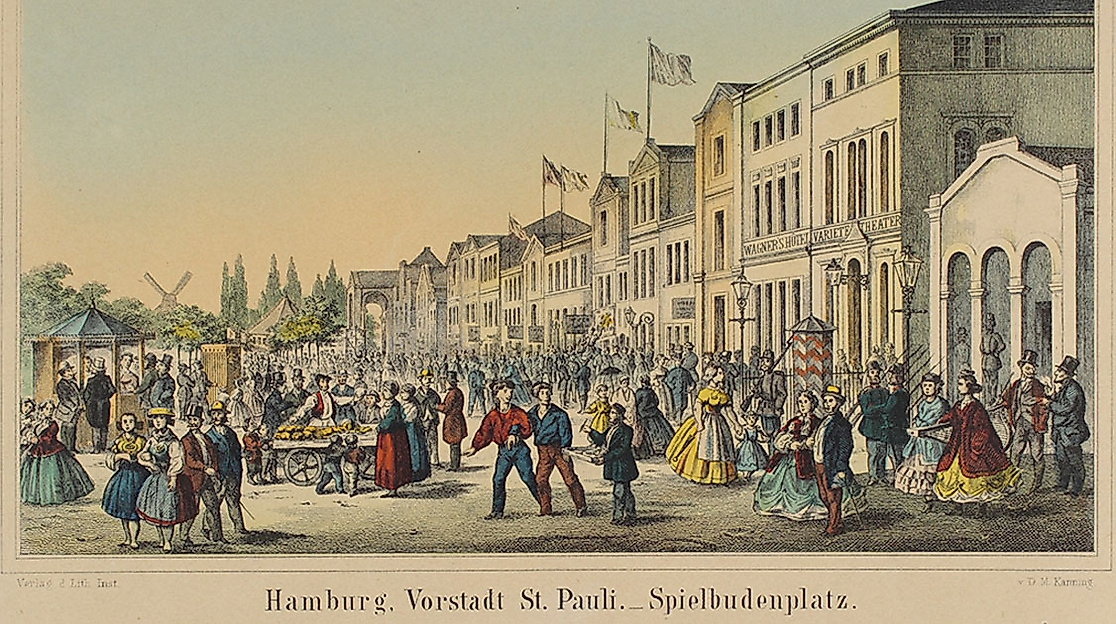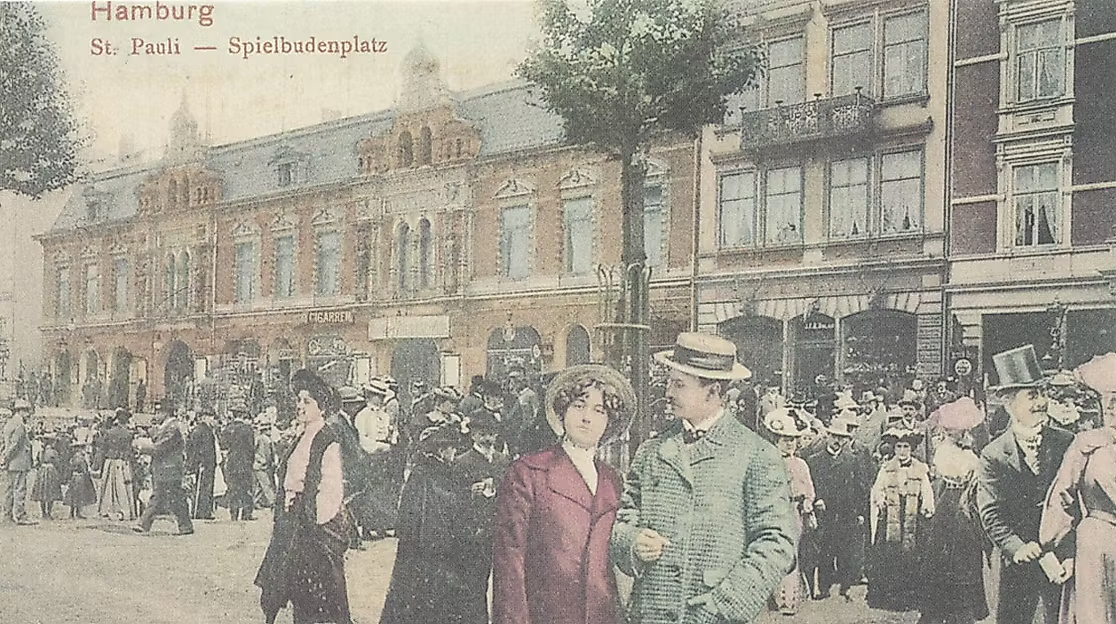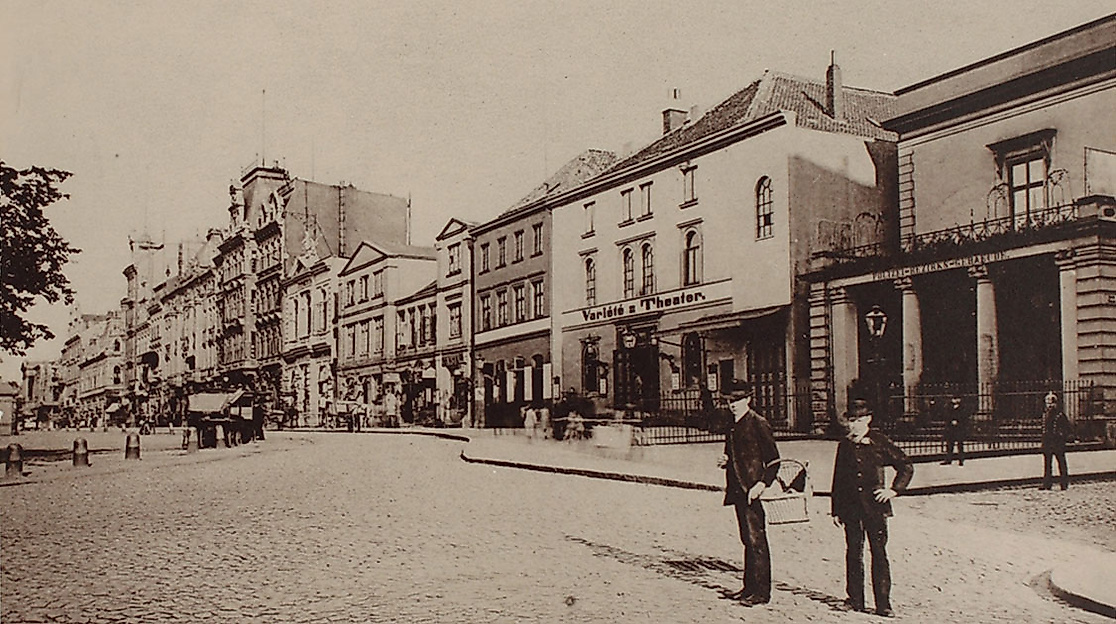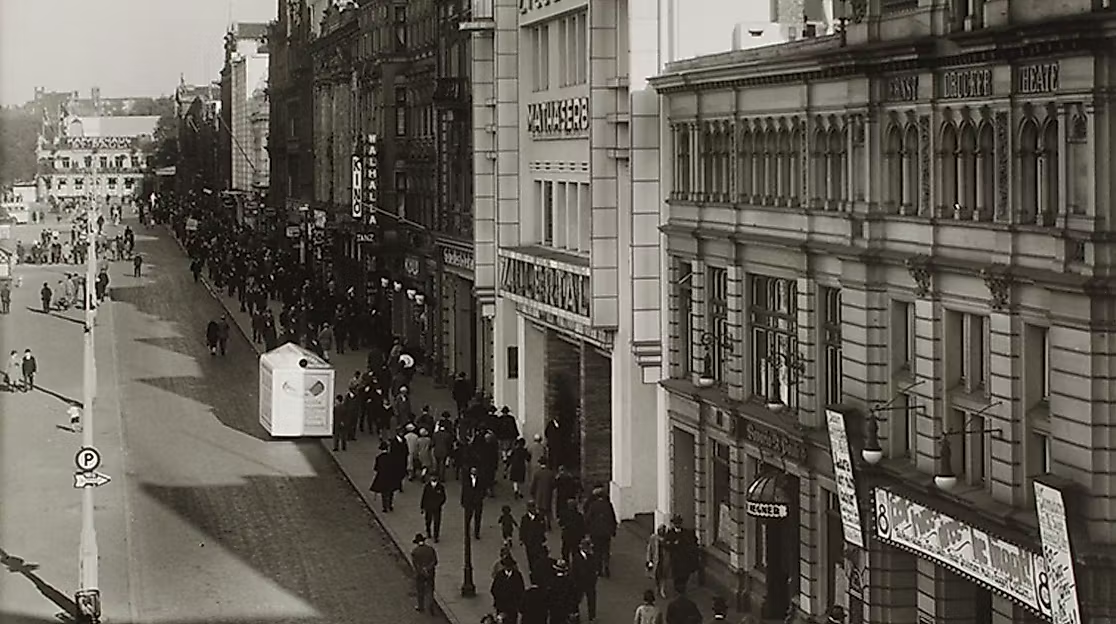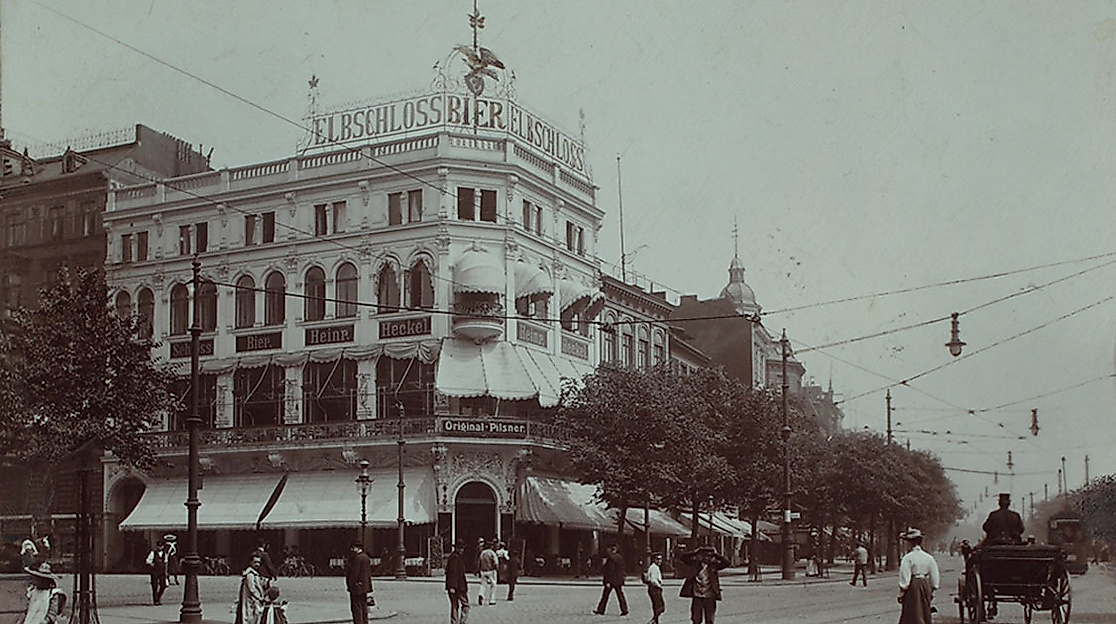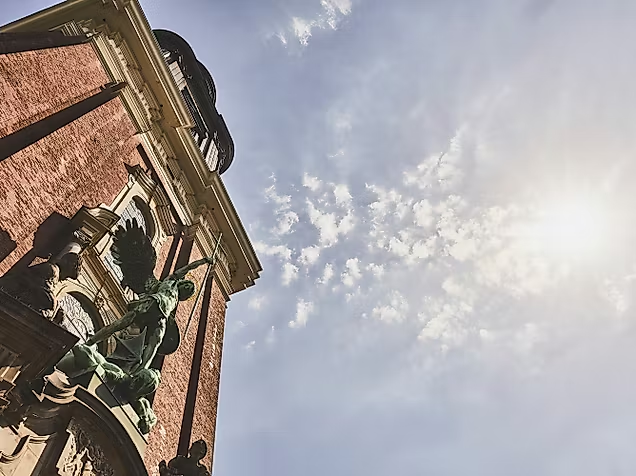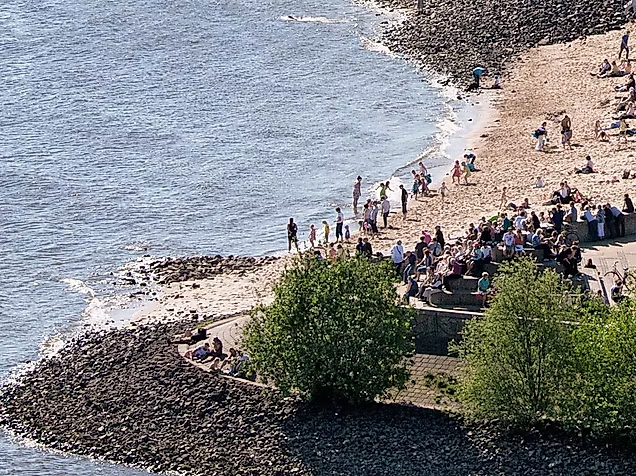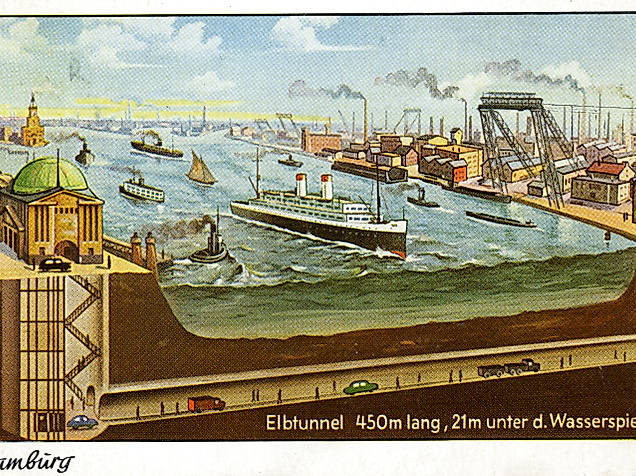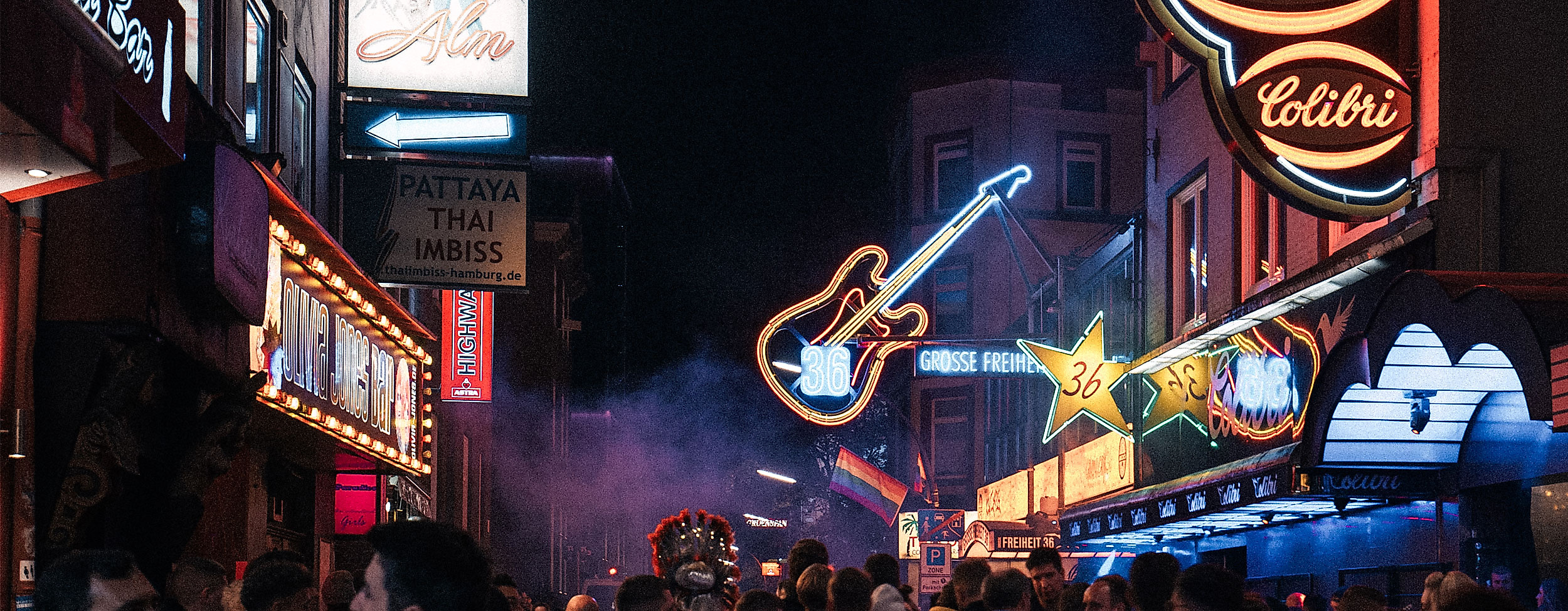
How St. Pauli became what it is today
St. Pauli and the Reeperbahn - these two names are known all over the world and for most people are synonymous with shady characters, immorality, pleasure of every kind and sex. The people of Hamburg and St. Pauli know better, but what is this reputation based on? A tracing of the past by Ortwin Pelc.
St. Pauli's special role as a district and entertainment centre arose from its location 800 metres between Hamburg and Altona. This area, the Hamburger Berg, had belonged to Hamburg since the Middle Ages. Trades that were not welcome in the city or took up too much space had to settle here. When Hamburger Berg became a suburb in 1830, it was named "St. Pauli Vorstadt" after its church.
From Hamburger Berg there was a magnificent view over the Elbe. The busy tourist traffic attracted travelling showmen, tightrope walkers and jugglers, and the Spielbudenplatz was first mentioned in 1795. In 1840, in order to bring some organisation to the growing chaos of wandering merry-go-rounds, Punch and Judy theatres, stalls and tents, the Hamburg City Council set aside plots of land for permanent buildings. Well-funded showmen could now move into these permanent buildings and offer their shows regardless of the weather.
Quite different businesses also discovered that money could be made in St. Pauli with unusual things. In 1848, fishmonger Gottfried Carl Hagenbeck put seals in wooden tubs on display in Lincolnstrasse. They aroused so much public interest that he expanded his business to include a brisk trade in live animals. His son Carl joined the business, expanding it to include animals from overseas such as elephants, giraffes and lions, and in 1874 moved it to Neuer Pferdemarkt, where he also ran a zoo and organised ethnological shows. When he ran out of space there, Hagenbeck built today's zoo in the Prussian town of Stellingen in 1907.
Circus Buildings and Theatres
In 1855, Ernst Renz opened his "Olympic Circus" and had a permanent circus building built on Circusweg, which became the model for circus buildings throughout Europe. Increasing competition and the growing demands of the public meant that new forms of entertainment had to be created and the changing tastes of the time had to be taken into account. In 1858 Carl Schultze rented the dance hall 'Joachimstal' and founded a summer theatre, which later became one of Hamburg's most famous operetta houses as the 'Carl Schultze Theatre'. The rapid development of the entertainment industry in St. Pauli was also reflected in the increase in the number of police officers. The first police station was built in 1840, and in 1854 a neo-classical building, known today as the Davidwache, was erected.
Amusement of all kinds
The suburb experienced a further boom after the introduction of free trade in 1865. At that time, St. Pauli was still closely linked to the port, as the Landungsbrücken for steamships had existed on the banks of the Elbe since 1839, and a fishing port with a wholesale market had been built here in 1861. The suburb grew alongside Hamburg, and in 1894 St. Pauli became a fully-fledged borough. The entertainment industry benefited from Hamburg's rapid development and the demand for leisure entertainment increased. St. Pauli's reputation spread far beyond Hamburg. The variety of entertainment on offer grew steadily. In addition to cabaret theatres, there were also theatres where operettas, folk plays, farces and comedies were performed.
The transitions from serious entertainment to unserious amusement were fluid. As a visitor, one entered the vicinity of illegal establishments, risked a glimpse into illicit worlds, or even experienced something that was indignantly rejected in the rest of the bourgeois world. In addition to restaurants and entertainment venues, commercial prostitution has always existed in St. Pauli. The number of brothels increased with the growth of entertainment in St. Pauli. Prostitutes could be found mainly on Davidstrasse, in pubs where people socialised over music and drinks, or in large dance halls where they had chambers for their services. Although prostitution was tolerated rather than legalised in Hamburg from the beginning of the 19th century, prostitutes had to register in order to avoid being punished for commercial fornication. The authorities were primarily concerned with combating disease and knew that bans would only encourage clandestine, uncontrollable prostitution.
Around 1900, Herbertstraße in St. Pauli was turned into a residential area with gates at both ends for better control, and now only brothels were located there. For visitors to St. Pauli, prostitution was always visible, a unique characteristic compared to other cities and part of the district's attraction.
A Vibrant Club Scene
At the beginning of the 20th century, St. Pauli had already gained its reputation. The song "Auf der Reeperbahn nachts um halb eins" (On the Reeperbahn at half past midnight) was sung in public for the first time in 1911 and became such a success that it has since become a kind of "anthem" of St. Pauli. Despite all the economic and political adversities of the First World War, the Weimar Republic and the Nazi regime, the district retained its reputation and function as an entertainment district with its ups and downs.
After 1945, it was not only the films of Hans Albers that made St. Pauli famous. In addition to the large dance halls and cinemas, the 1950s saw the emergence of famous clubs, which in the early 1960s became the birthplace of beat music. In the Kaiserkeller, the Top Ten and the Star Club, the Beatles celebrated all-night successes before launching their international career. There were also increasingly permissive striptease bars, sex shops proliferated, and prostitution sought new marketing channels through large brothels. Closely linked to this was organised crime, which also underwent significant changes as the once prominent local giants disappeared in the face of more discreet international criminal networks.
The neighbourhood's problematic image in the 1970s, due to decay, squatting on Hafenstrasse and crime, was gradually transformed from the 1980s onwards by successful musicals such as Cats and new theatres such as Schmidts. Cheap rents made St. Pauli a popular place to live for immigrant families, students and artists. In 2004, the Bavaria St. Pauli brewery building was demolished to make way for high-rise blocks, and the "Tanzende Bauten" (dancing buildings) changed the traditional silhouette of Spielbudenplatz. Discussions about the demolition of the Esso buildings illustrate the potential for protest in the district. This left-wing image of St. Pauli is also part of the self-image of the football club of the same name.
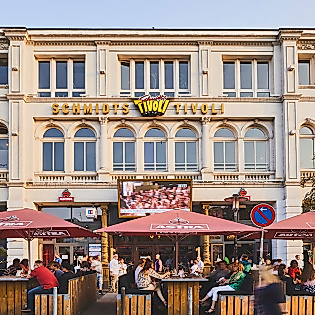
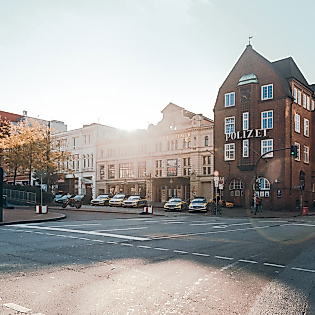
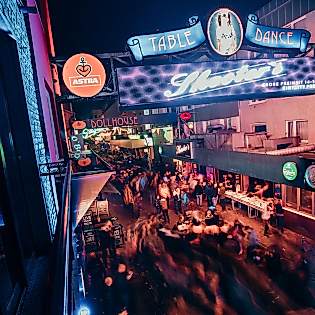
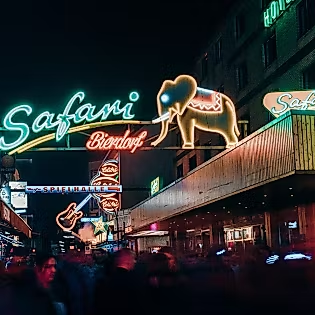
Theatres, music clubs and the Reeperbahn Festival, packed tourist buses and countless late-night themed tours show that the district is once again attracting unbroken interest from Hamburgers and foreigners alike. The concentration of a wide variety of amusements - including the disreputable and illegal - in a relatively small space seems to be unique in the world and has ensured that St. Pauli's reputation has endured well into the 21st century.
Hamburg History Live Magazin
This article is from issue 02 /2016 of the Hamburg History Live magazine of the Historische Museen Hamburg. In two issues per year, exciting chapters from the history of Hamburg and the North are told, Hamburg artists are introduced, the historical development of Hamburg's districts is presented - and information about the program of the Historische Museen Hamburg is provided.
More on www.shmh.de/history-live
